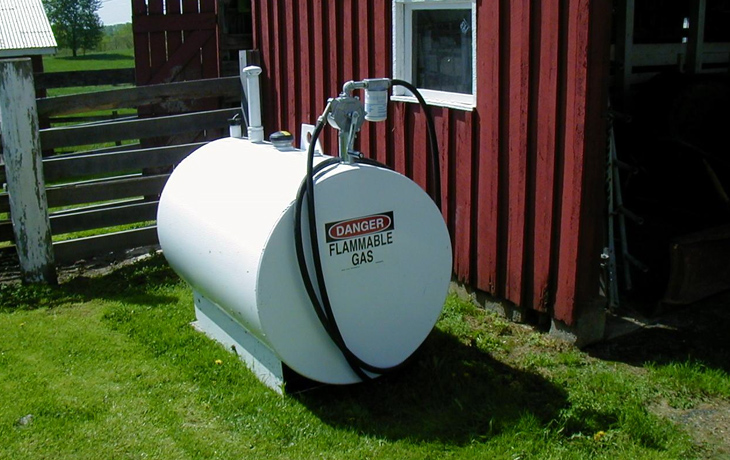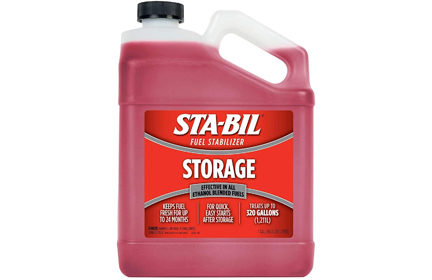
Between vehicles, generators, and other gas-powered equipment around your home, it makes sense to store at least a little bit of fuel in case an emergency strikes. This guide explains the ways people store gasoline and other FAQ.
A sudden evacuation, power loss, or SHTF event is not the time to wait in line with other panicked people at a gas station — if it’s even open and supplied to begin with! You may need to bug out quickly or immediately run a generator for medical reasons, for example.
Review: Best gas can
Summary:
- At minimum, preparedness experts recommend that you always have enough gas around to fill your main vehicle from empty to full (roughly 15-20 gallons).
- It’s easy — the vast majority of people keep a few affordable five gallon jerry cans in their garage with annual rotation. That’s it!
- There’s a meaningful difference in quality and safety between a “proper” metallic can and the more commonly seen plastic ones.
- Official guidelines say to use a metal container, but most people do fine with plastic as long as they aren’t dumb about safety.
- More robust options include 10-50 gallon semi-portable tanks, 10-150 gallon accessory tanks mounted to your vehicle (eg. in a truck bed), or large >200 gallon above-ground tanks permanently installed on your property.
- Standard gasoline has a relatively short shelf-life. It starts degrading in a month, and most people avoid using gas once it’s 6-12 months old.
- But if you add a fuel stabilizer, you can multiply the lifespan and keep gas stored for a few years.
- Diesel fuel generally lasts much longer, to the point most people don’t feel the need to add stabilizers if the fuel will be used within a few years.
- Normal gas doesn’t really freeze until -50 degrees F (-45 C) or worse — but it can start to thicken and cause engine problems below -10 F (-23 C). Stabilizer will help.
- Diesel freezes (called “gelling”) sooner than normal gas, causing problems below 10-15 degrees F (approx -10 C). Stabilizer helps here, too.
- Use your head with storage: only use proper containers, stay away from heat / spark / flame sources, don’t store inside your home (garages are usually okay), avoid direct sunlight, be mindful of fumes, etc.
Our Pick

Sta-bil Fuel Stabilizer
Cheap and effective. Add this to your stored gas to keep it fresh for up to a year or more. 8 ounces of Sta-bil treats 20 gallons of gas.
Check local laws
Lame disclaimer time! Gas is dangerous. Which means it’s regulated by the government and any discussion around it often includes tons of overly-cautious warnings.
Generally speaking, you don’t need permission to store gas on your property. But there are various state, county, and city ordinances that may apply. HOAs and multi-unit buildings may also have their own rules, too.
Tip: A good resource is your local fire department. We’ve installed large systems in the past, and the local FD was great about giving tips on location, laws, and so on.
For example, one time when installing 1,000 gallons of above-ground tanks in an area prone to wildfires, the fire department told us the minimum distance they needed between the house and fuel tanks (essentially large bombs) to still feel safe while trying to save the home from fire.
Types of gas storage
Generally speaking, people tend to start at the top and work their way down:
- Small jerry cans you carry with one hand
- Accessories specifically made for your vehicle, mostly found in trucks, off-roaders, etc.
- Semi-portable options that are the size of a few jerry cans
- A large tank installed on your property, likely above ground.